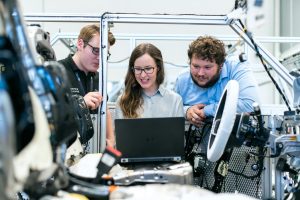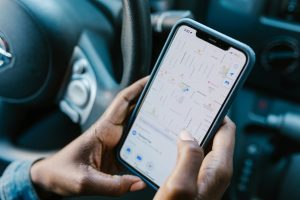The Impact of Vehicle Connectivity on User Experience
In today’s world, connectivity has become an essential part of our daily lives. From smartphones to smart homes, everything is connected, and the automotive industry is no exception. With the rise of technology, vehicles are now equipped with advanced connectivity features, changing the way we interact with our cars. This has had a significant impact on the overall user experience, from safety to convenience. In this article, we will explore the various ways in which vehicle connectivity has revolutionized the user experience and its implications for the future.
The Evolution of Vehicle Connectivity
Gone are the days when cars were just used to commute from one place to another. With the advancement in technology, vehicles have become more than just a means of transportation. The automotive industry has witnessed a massive transformation in recent years, and the integration of connectivity features has played a crucial role in this change.
The concept of connected cars first emerged in the early 2000s when General Motors introduced the OnStar system, which provided services such as navigation, emergency assistance, and remote vehicle diagnostics. This marked the beginning of a new era in the automotive industry, and since then, there has been no looking back.
Today, vehicle connectivity has become much more than just a luxury feature. It is now a standard offering in most new cars, and the market for connected cars is expected to grow exponentially in the coming years. According to a report by Allied Market Research, the global connected car market is estimated to reach $225.16 billion by 2025, growing at a CAGR of 17.1% from 2018 to 2025.
The Impact on Safety
One of the biggest impacts of vehicle connectivity on user experience is in terms of safety. With the integration of advanced safety features, such as automatic emergency braking, adaptive cruise control, and lane departure warning, connected cars are making roads safer for motorists.
In case of an accident, connected cars can automatically send a distress signal to emergency services, providing them with crucial information, such as the location of the vehicle and the severity of the crash. This feature has the potential to save lives, especially in remote areas where reaching out for help may be challenging.
Moreover, vehicle connectivity has also made it possible for cars to communicate with each other and with the surrounding infrastructure. This allows the car to receive real-time updates on traffic and road conditions, making the driving experience safer and more efficient.
Convenience at Your Fingertips
Apart from safety, vehicle connectivity has also greatly enhanced the overall user experience by making driving more convenient. With connected cars, you can now access a wide range of features and services at your fingertips.
For instance, you can remotely lock or unlock your car, start the engine, and even set the temperature inside the car, all through a mobile app. This means you can warm up your car in winter or cool it down in summer before you even step inside.
Additionally, connectivity also allows for over-the-air updates, eliminating the need to visit a mechanic for software updates. This not only saves time and effort but also ensures that your car stays up-to-date with the latest features and performance improvements.
The Future of Vehicle Connectivity
The road ahead for vehicle connectivity looks promising, with more advanced features in the pipeline. With the advent of 5G technology, the speed and reliability of connectivity are expected to increase significantly, opening doors to more innovative applications.
One such application is vehicle-to-everything (V2X) communication, which integrates vehicle-to-vehicle (V2V), vehicle-to-infrastructure (V2I), and vehicle-to-pedestrian (V2P) communication. This will allow cars to communicate not only with each other but also with traffic signals, road signs, and even pedestrians. This will make driving safer and more efficient, as cars will be able to predict and avoid potential accidents.
In conclusion, vehicle connectivity has had a massive impact on the user experience, bringing in a new level of comfort, safety, and convenience. With the continuous evolution of technology, the possibilities for connected cars are endless, and the future looks bright for the automotive industry.
Sources:
https://www.alliedmarketresearch.com/connected-car-market
https://www.nhtsa.gov/technology-in-autos/vehicle-safety











